Our blood needs to be a neutral pH in order to function properly, and so our body works hard to maintain this pH no matter what. When we eat a diet rich in acid-forming foods, the body looks for a way to neutralize the acid and so it searches for a convenient and easy source of alkaline material (base), which it finds in our bones. Pull out the calcium from our bones, a strong base, mix with the acid, and voila! Neutral pH. Think of eating Tums when your stomach is acidic—the calcium carbonate in the Tums neutralizes the acid in your stomach. (NOTE: acid-forming foods are different from acidic foods. For instance, a lemon, which is strongly acidic, is an alkaline-forming food because of the bi-products it produces when digested.) The American diet is filled with acid-forming foods—meat, dairy, processed grains, soda, coffee, sugar, and alcohol. No wonder our poor bones are falling apart! Not only does acid affect our bones, it contributes to the overgrowth of yeasts and other unwanted parasites in our bodies, which also thrive in an acid environment. And, it increases inflammation. Not to mention the cancer connection. In other words, acid makes for a weaker system.
The solution to the problem? Cut down on acid-forming foods and increase alkaline ones. Fruits and vegetables have the highest alkalinity, as do almonds, so a diet rich in fruits and veggies is not only good for your health, it’s good for your bones. Lemons, although acidic, are in reality alkaline-forming when they are digested. So is apple cider vinegar. Try adding lemon juice to your salad dressings and soups as a great way to balance the acid. I start my day with an alkaline-rich juice made from ½ an apple, 2 stalks celery, a handful of parsley, a couple of leaves of kale, ½ cucumber, ginger, and a half of lemon. (You can substitute for the kale, broccoli stems or spinach.) It is delicious and jumpstarts my day. Kids will even love this drink (if they can get over the fact that it is green!). Cucumber and celery are great bases for juices since they are highly alkaline and also have a high water content. If you prefer the smoothie route, you can make a green smoothie—just don’t add any milk or sweetener to it. (Blackberries, strawberries and raspberries are very alkaline. Blueberries are acidic.)
Adding cayenne pepper, cinnamon, ginger, or herbs to foods also adds alkalinity. Grains tend to be acid-forming, so adding these flavorings to them helps neutralize their acid. I know it sounds weird to cut down on dairy when we have been brainwashed into thinking that dairy makes our bones and teeth strong. I asked my son, David’s nutritionist girlfriend, Alyssa, about this and she sent me a link to What to Eat by NYU Professor of Nutrition Marion Nestle. “Dairy foods are not nutritional requirements,” Nestle says. “Think of cows. Cows don’t drink milk after calfhood but they grow bones that fully support 800-pound weights and more. They do this by eating grass. Grass has calcium and so does every other food plant.” So why have we been told to “eat more dairy?” It might have something to do with the fact that, according to T. Colin Campbell, the textbook on nutrition used in most medical schools was written by the Dairy Council—talk about a conflict of interest!
All vegetables, nuts and grains are good sources of calcium, but if you still feel you should take a calcium supplement, lots of studies show that plant-based calcium reaches our bones better than traditional calcium carbonate or calcium citrate. The one I take, New Chapter Bone Strength, is derived from kelp, a great source of calcium. Here are some easy ways to increase alkalinity in your body, increase our calcium, and therefore strengthen our bones and help fight disease. I wish I had known this years ago…I probably wouldn’t need to take a calcium supplement now!
1. Increase vegetable consumption. Try juicing or making green smoothies for an easy way to bulk up on the veggies.
2. Snack on cucumbers and celery throughout the day. They are highly alkaline, low in calories, and filled with minerals.
3. Add chopped parsley (or cilantro) and lemon or limejuice to spreads, salads, and soups.
4. Cut down on meat and dairy consumption. (Yogurt, without sugar, is ok—it is a highly alkaline-forming food.)
5. Cut down on caffeine, soda, and sugar consumption.
6. Check out this list of foods to know which are alkaline-forming.
***
I’ve had lots of requests for healthy, no meat ideas for lunches. Here is a vegan version of egg salad using tofu instead of eggs. It is chock-full of alkaline rich ingredients, high in protein, and delicious.
This recipe along with hummus and mock tuna provide yummy vegan alternatives for lunch. Spread on bread or in a wrap topped with a generous helping of greens or sprouts.
mock tuna (above) recipe here
Curried Nada-Egg with Watercress Wraps
(from Crazy Sexy Kitchen)
Two 14-oz packages of firm tofu
¾ cup Vegenaise or Cashew Aioli*
3 tablespoons finely diced green onions
¼ cup grated carrot
3 tablespoons finely chopped parsley
3 tablespoons finely chopped cilantro
3 tablespoons nutritional yeast
1 tablespoon Dijon mustard
1 ½ tablespoons curry powder
½ teaspoon sea salt
½ teaspoon black pepper
6 whole-grain tortillas (or sprouted or gluten-free)
1 ½ cups watercress or baby arugula
1 tomato thinly sliced
1. Crumble tofu with your hands in a bowl.
2. Add Vegenaise (or cashew aioli), green onions, carrot, parsley, cilantro, nutritional yeast, Dijon mustard, curry powder, salt, and pepper and mix thoroughly.
3. Place generous amount of tofu salad in the center of each wrap. Top with watercress and sliced tomatoes
*Cashew Aioli
2 cups raw cashews, soaked in water for 4 or more hours to soften
¼ cup filtered water, to blend
2 tablespoons olive oil
1 tablespoon apple cider vinegar
1 ½ tablespoons lemon juice
1 tablespoon agave (you don’t need this—I omitted it)
2 cloves garlic
¾ teaspoon sea salt.
1. In a high-speed blender, blend all ingredients until smooth.
Add water as needed to reach desired thick, mayo-type consistency.
If you want, you can add more lemon juice or apple cider vinegar to make it into a “sour cream.”
Enjoy!
Love,
WWW
WWW
EDITED TO ADD: I just wanted to make it clear that I am not (at all) a proponent of the "Alkaline Diet" which is a fad diet. I am, rather, in favor of balancing one's diet by decreasing the amount of acid forming foods and increasing veggies in order to have stronger bones and overall better health. -WWW

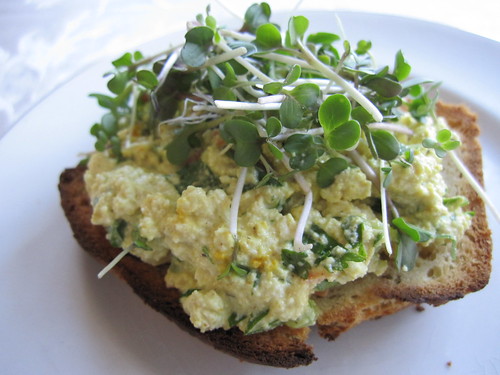
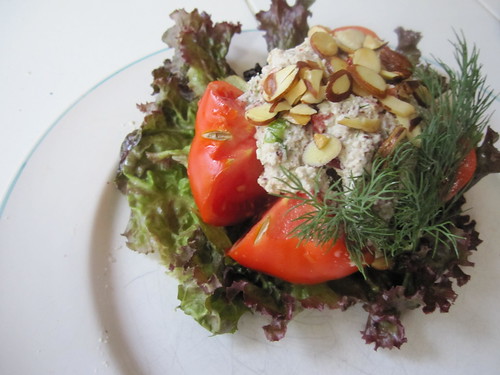

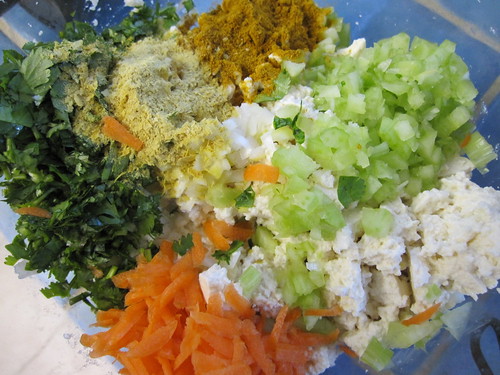
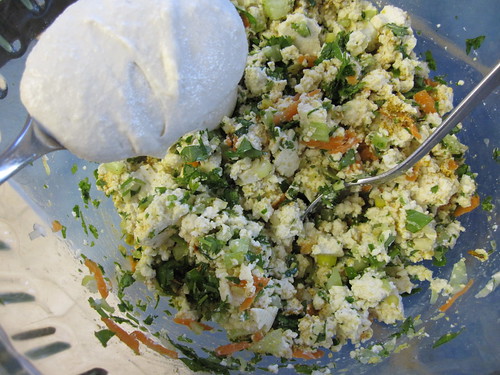

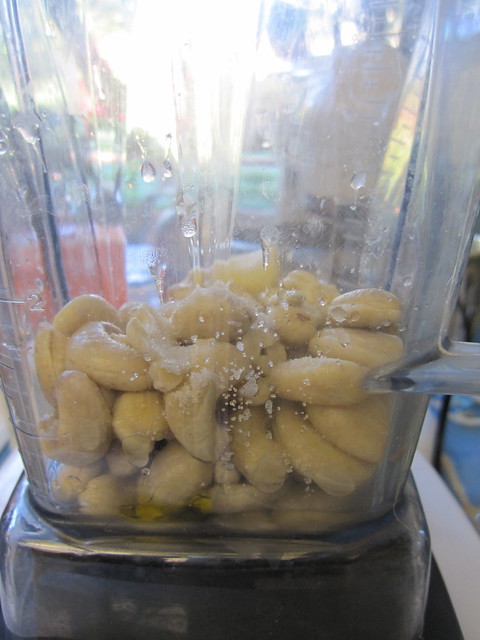


0 comments:
Post a Comment